- REALM Group Newsletter
- Posts
- REALM Group Australia Newsletter RGA W/E- 07/11/25
REALM Group Australia Newsletter RGA W/E- 07/11/25

F E A T U R E D
ARTICLE 923
Synergy lodges applications for 'divisive' wind farm on WA's south coast

The Augusta community has been divided regarding the proposal since it was announced in 2024. (Supplied: Scott Baxter)
In short:
State-owned power provider Synergy has submitted development applications for a proposed wind farm in WA's South West.
Its proposed 20-turbine wind farm at Scott River has met with strident opposition from some in the local community.
What's next?
WA's Environmental Protection Authority is considering whether to assess the project.
State-owned power provider Synergy has lodged a formal development application for a proposed wind farm in Western Australia's South West, marking a significant milestone for the renewable energy project.
The proposed 20-turbine development at Scott River, 300km south of Perth, has had strident pushback from some in the local farming community.
The project has also been referred to the Environmental Protection Authority (EPA), which recently closed public consultation with 384 submissions received.
It will decide whether the project requires a formal assessment.
Electricity from the proposed wind farm would feed into the Beenup substation, powering nearby homes and businesses before being distributed to the wider state electricity grid.
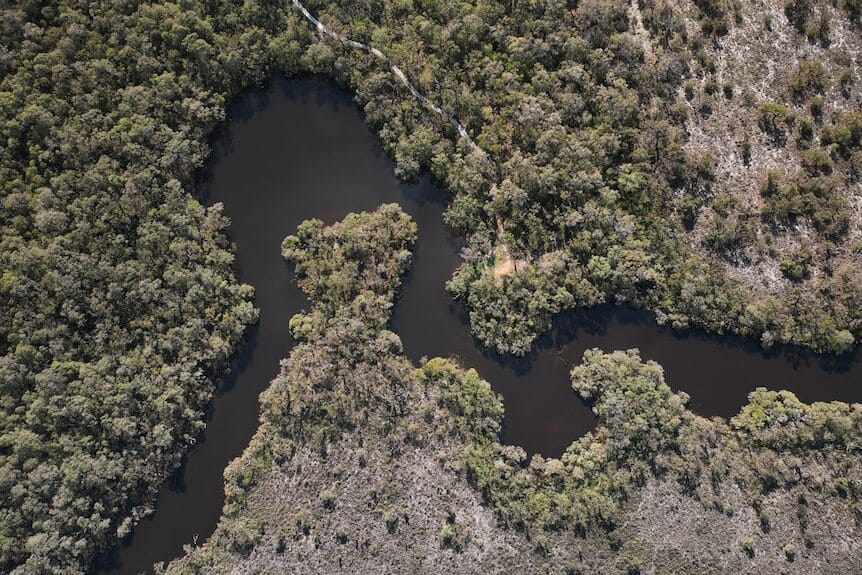
Scott River was the site of a titanium mine that closed due to environmental issues. (Supplied: Scott Baxter)
Local community 'divide'
Half of the residents surveyed as part of Synergy's submission to the EPA were "extremely supportive" of the proposed wind farm, while a third of the remaining respondents were strongly opposed to it.
"The proposed wind farm at Scott River does have the potential to drive some division in attitudes with the local community," Synergy's societal values assessment report noted.
Emma Pinnick is a member of the No Wind Turbines - Scott River group, and said the decision by some local farmers to host turbines on their land had raised tensions in the community.
"I'm friends with some of those farmers that actually put their hand up for the turbines," she said.
"It's been really quite difficult. It's causing a lot of community divide."
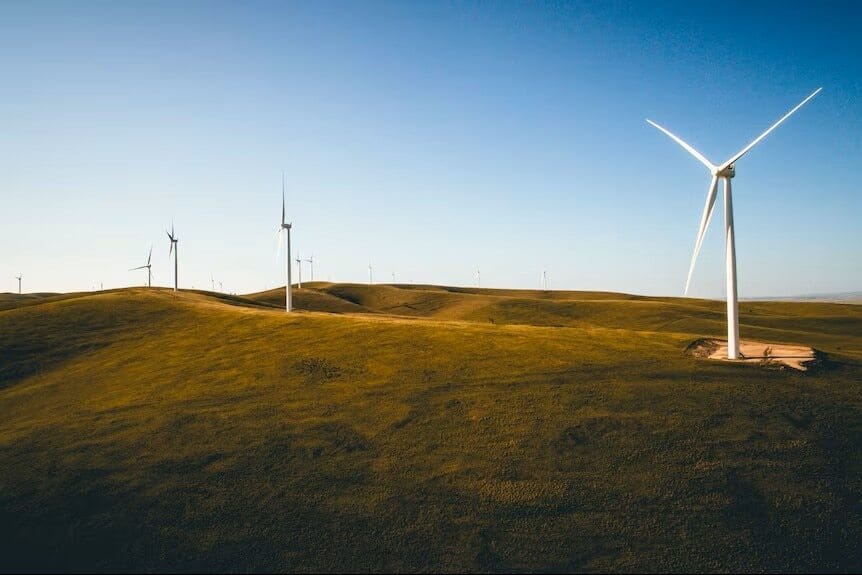
The proposed wind farm would have 20 turbines capable of generating up to 100 megawatts of power in total. (ABC News: Charles Brice)
Ms Pinnick said she was concerned the turbines would impact the town's ability to attract new residents and tourists.
"They're coming here for the natural beauty of the bushland and the bird life on the river," she said.
"Especially in areas where you have the views, realtors have to disclose [the potential turbines] so when there's been potential buyers, that's been a concern."
Ms Pinnick claims ratepayers had not been properly consulted by the state-owned energy provider.
A Synergy spokesperson said it had undertaken comprehensive community consultation as part of feasibility studies, which included community drop-in sessions, a survey, and regular meetings with landowners and community groups.
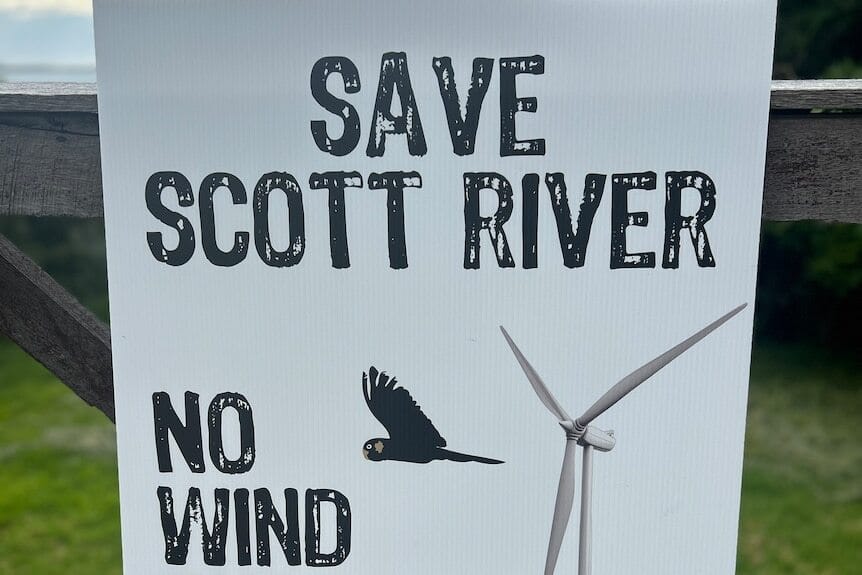
Wind farm opponents have formed a lobby group. (Supplied: Emma Pinnick)
Augusta-Margaret River Clean Community Energy Group (AMRCCE) carried out the initial feasibility studies until Synergy took the reins of the project in 2023.
AMRCCE chair Jessica Worrall said Synergy's plans had mitigated a lot of environmental impacts.
"They've looked at what clearing they're doing in that space and the potential impact on threatened environmental species and confirmed that they're doing less than 1 hectare of clearing," she said.
"They've done very thorough studies on bird and bat surveys, and they've confirmed there's no black cockatoo nesting sites within that space."
Ms Worrall said attitudes towards the visual pollution caused by turbines were subjective.
"Either you look at them and say, 'That's our contribution to being part of the solution for the climate crisis or you look at them and see a change that you don't like," she said.
Acidic soil concerns
In 1999, BHP prematurely closed its Beenup titanium mine in Scott River due to environmental issues regarding the exposure of acid sulphate soils.
When disturbed or exposed to air, acid sulphate soils can release sulphuric acid and other heavy metals into surrounding water bodies and groundwater.
Synergy's EPA submission included plans to neutralise the exposed acidic soil with lime treatment during construction to avoid contamination.
The management plan has not allayed the concerns of some nearby farmers.
Gary Buller's farming property borders the proposed site, and he said he had turned down hundreds of thousands of dollars to host the turbines.
He said he did so because the risks of exposing acidic soil through drilling were too great.
"We've declined to be involved because we see the threat to the environment," he said.
"If they rupture the aquifer underneath, they're going to have acid sulphate soil mixing with a massive volume of water they won't be able to stop.
"All of that is going to make its way into the river, and they won't be able to stop it."
Pay In-Time Finance
The Reserve Bank of Australia has held the cash rate again, signalling a strong bias toward maintaining current settings rather than easing. With inflation sticky and economic momentum uncertain, a cut isn’t on the immediate horizon. That means farmers should act now while the rate remains stable—not wait for relief that may not arrive soon.
Meanwhile, machinery and equipment costs have just taken another tick upward: new headers and harvest gear are now comfortably over $1 million in many regions. For many operations, the choice is no longer simply “buy or hire” but “can I afford to buy and how will it affect cash-flow if I do?” Large upfront equipment costs paired with stable loan rates mean strategic finance is more important this year than ever.
In agricultural property circles, one of the biggest stories is the sale of the Australian Wool Testing Authority’s city-site, offering a $45 million windfall and reinforcing the message that asset realisation and liquidity are playing an increasing role in agribusiness funding. For farm owners, this underlines the point: land and asset value might be rising, but converting that into operating cash still takes the right finance structure.
At Pay In Time Finance, we’re working with farmers this week to make all of this useful—not just talk.
We’re helping clients lock in loans under the current rate setting before margins, spreads, or lending policies shift. We’re designing finance for major equipment purchases that factor in cash-flow peaks and troughs, so repayments don’t bite when input costs hit or harvest lags. And we’re exploring how asset-value movements (like land sales or site windfalls) can be matched with debt that supports, rather than strains, the operation.
If you’re looking at upgrades, refinancing, or making sure you’ve got buffer finance in place, now is the moment to get ahead. With no rate cut signalled, acting early gives you the choice and control—rather than being forced into a rush later.

INPUTS & COMMODITIES
In November 2025, Australian agricultural inputs are influenced by mixed rainfall, with dry conditions in parts of South Australia, Victoria, and southern NSW, but recent showers in Queensland and central NSW that boosted soil moisture for summer crops. Key inputs include strong prices for beef, a record-breaking year for beef production, and strong prices for canola and wheat. However, recent weather events have impacted stone fruit and may lead some growers to cut cereal and canola crops for hay instead of harvesting. The National Agricultural Land Management Survey (NALMS) 2025 also began in November, gathering data on farming practices, with results not expected until late 2026.
 |  |
Mixed rainfall: South Australia, Victoria, and southern New South Wales are experiencing dry conditions, impacting winter crops.
Beneficial rainfall: Recent rains in Queensland and central New South Wales have improved soil moisture for summer crops and helped winter crops in their final stages.
Harvest decisions: Some growers in dry regions are considering cutting cereal and canola crops for hay due to the dry conditions.
Impact on stone fruit: A heavy rainfall event in late November negatively impacted stone fruit harvest totals by about 10% in affected regions of South Australia.
Livestock and commodities

Beef: Beef production is forecast to reach a record high of 2.6 million tonnes in 2025, supported by high slaughter rates.
Lamb prices: Lamb prices have surged, with processors paying over $10/kg.
Canola: Bids for canola are strong in both the west ($A$825/tonne) and east ($A$804/tonne) of the country.
Wheat: Prices remain firm, with bids of $A$342/tonne in the west and $A$340/tonne in the east.
Barley: Prices have been pushed up by the weather, with bids of $A$304/tonne in the west and $A$299/tonne in the east.
AG MACHINERY
Autonomous Tractor Technology Has Arrived For Tillage

Autonomous farm machinery is no longer a technology of the future — tasks such as tillage and grain cart operations are now operating nearly on their own.
John Deere and AGCO have been working toward full autonomy for years. Familiar functions, such as guidance lines, automated turns, and implement guidance, have been the building blocks for the truly driverless tractor.
Deere’s autonomous upgrades and AGCO’s OutRun aftermarket kit have moved past the trial stage, with limited commercial availability in 2025 — the first growing season in which farmers are buying and using this technology outside of testing programs. Dozens of units have tilled fields this year, according to Michael Porter, go-to-market manager of large tractors and tillage at John Deere.
Spring tillage often has farmers operating in tight windows; autonomous tillage can help alleviate labor shortages and allow planting to take place optimally, according to Darcy Cook, senior director of autonomous solutions at PTx Trimble.
“We have a mixed-fleet solution we are developing around the crop cycle — from the grain cart to tillage — and we’ll have fertilizer spreading and other functions in the future,” Cook said.
Hands-Free Farming

The OutRun autonomous system is available for select John Deere and Fendt tractors. AGCO
Before a farmer can start with autonomous functions, they first need to verify field boundaries and guidance lines in their farm management information software — John Deere Operations Center or PTx FarmEngage. They then drive their tractors and connected implements into the field.
For Deere’s system, farmers open the Operations Center on their phones, select the field in which they want autonomous tillage done, and create a work plan. There, they set up the type of tillage, direction, heading angle, and how many headland passes they want. Once set up, the farmer accepts the work plan inside the machine.
“And then, it’s getting out of the machine, using Operation Center Mobile, and swiping to start,” Porter said.
The machine performs safety checks using its vision system, honks the horn to alert anyone nearby, lifts the tool to the starting point, and tills the field. Farmers are free to work elsewhere on their operations, using the mobile app to monitor the tractor’s progress or any obstacle alerts. Thanks to high-visibility headlights, Deere’s system can also operate overnight, preparing fields for planting the following morning.
For AGCO’s OutRun system, once the tractor is in the field, farmers use the operator interface on their phones or the in-cab display to set boundaries and headlands. The farmer then sets the machine to autonomous mode, steps out of the cab, and presses an arming button on the tractor’s ladder. Once the farmer is clear of the tractor’s path, they can start the tractor from their phone.
Compatibility and Installation
AGCO’s OutRun system is compatible with model year 2014 or newer John Deere 8R tractors with Infinitely Variable Transmission (IVT). Compatibility with Fendt tractors is planned to begin in 2026. The main portion of OutRun’s intelligence technology is designed to be broadly the same across all tractor models, needing only a specific drive-by-wire kit for different makes and models.
Farmers order their systems through AGCO dealers who sell PTx Trimble technology. The dealer installs at the farm and walks operators through its use and safety tips. Typically, installation takes only a single day.
John Deere’s autonomous tractor kit is compatible with mid-model 2022 or newer 8R tractors, or 2022 or newer 9R tractors; all need to be wheel or 4-track RX machines. Tillage implements are compatible as far back as 2017, including Deere’s chisel plow, vertical till, high-speed disk, and coulter chisel models. Depending on the year, tractor and tillage models may require different installation kits. Porter said complete installation for software, cameras, and harnessing typically takes about seven hours.
A farmer provides their tractor’s serial number and type of tillage tool to their dealer, who then builds out a compatibility kit.
It’s Coming RM / AF
For Sale Listings
(List It For FREE!)
Featured Auction Listings
RGA - REALM GROUP AUSTRALIA - MULTI-VENDOR MACHINERY AUCTION, AUSTRALIA WIDE
We’re now taking listings for our next up-and-coming auction.
Contact us today!

AG NEWS AUSTRALIA
Drones Transforming Australian Agriculture: The Future of Smart Farming.
 |  |  |
Welcome back for the second article about Drones and how they are not only transforming Australia’s Agriculture industry but the world’s.
In this article, I want to share a drone technology and use case I had the pleasure of seeing in action last week. The Drone in a Box system is not only being adopted by the Agricultural Industry, but other industry sectors such as Industrial Infrastructure Management, Renewable Energy Assets Inspection & Management, Mining & Resources Sector, Security / Surveillance, and Transport & Traffic networks.
I was invited by Ed Boxall, Managing Director of Sensorem, a leader in Drone in a Box technology globally, to see their Remote Operations Centre they call the ROC. The ROC has multiple stations where Drone Pilots remotely operate a large fleet of Drone in a Box platforms developed by Sensorem all around Australia.
The ROC, which is located in their Perth headquarters, looks like something out of Star Trek. To say it was impressive was an understatement. We watched on as one of their highly trained pilots connected to a Senshub drone-in-a-box platform located on a Feed lot site in Mildura, After thoroughly going thru all the required checks and notifying any manned aircraft in the area via aviation radio the pilot initiated the Drone to complete a pre-programmed automated flight to check and capture images of the water level of all the water troughs located on this large property.
Traditionally, this task was undertaken by 1 employee and would take approximately 4 hours to complete, and they would do this twice a day. From the start of the flight to the time the client was forwarded, the captured images were less than 20 minutes old. Not only did this save a significant amount of time, it also reduced the client’s costs and, importantly, at a time when there are labour shortages in rural areas, it freed up an employee to undertake other work. Deploying this technology provided a multifaceted benefit to the client.
What is Drone-in-a-Box, and how can it be used?
 |  |
Sensorem’s Drone-in-a-Box (DiaB) systems are revolutionising the way Australian industries monitor, inspect, and secure critical assets and operations.
Operating beyond visual line-of-sight (BVLOS) and integrated with advanced AI, their fully autonomous drones deliver instant, actionable data from the most remote and challenging sites without the need for an on-site pilot.
Sensorems Senshub drone-in-a-box technology automates the entire on-site process – Launch, Fly, Land, Charge, and data transfer – with no staff on the ground.
All flights are autonomous but remain remotely supervised in their control room.
That means:
∙24/7 site security patrols ∙Regular, scheduled asset and site inspections
∙Rapid response to events or triggers (e.g., such as alarms or intruders)
∙Significant cost savings compared to the equivalent ‘piloted’ operations
How can Drone in a box assist the Agriculture Industry?
 |  |
Some of the many areas this technology can be leveraged in the automation of modern farming
Bird & Pest Control – Protect orchards, vineyards, and grain facilities by deterring birds, kangaroos, & other animals without harm. Automated patrols reduce losses and safeguard hygiene standards during harvest. This approach is currently being used successfully at CBH Receivale and Storage Sites throughout WA.
Crop & Livestock Monitoring – Identify variations in crop health and track the movement, behaviour, and well-being of livestock with minimal manual oversight.
Asset Inspections – Detect issues with fences, sheds, and water troughs, etc., early to keep farm operations running smoothly.
Wildlife Protection and Feral Animal Management – Support conservation programs such as koala population counts or habitat monitoring, conducting surveys to identify the numbers of feral animals on a site that can have huge negative effects on crop production, such as Camels, Deer, and Pigs.
Security & surveillance – Run automated patrols to prevent theft, vandalism, or unauthorised access to rural and remote locations. As impressive as this is, this is only 1 of many different drone technologies we will be discussing throughout this series of articles that can be leveraged by the Agriculture Industry that assist you in increasing safety, productivity, and reducing costs compared to traditional methods.
In the next instalment of this series of articles, and before I get you too excited and dive into all the amazing ways you can leverage Drone technologies, It is important I go through the CASA regulatory requirements that farmers and other agricultural businesses need to be aware of to safely conduct drone flight operations and maintain regulatory compliance.
Throughout this series, if you have any questions or would like me to go into more detail on a drone use case or technology, please check our website or contact me directly. My contact details are on our website www.skyscangeomatics.com.au
Written by Mike Hooker
Welcoming Mike Hooker - Civil Aviation Safety Authority (CASA) with REALM Group Australia
 My Name is Mike Hooker, and I am the Founder, CEO, and Civil Aviation Safety Authority (CASA )Approved Chief Remote Pilot for Skyscan Geomatics, which is a leading Drone Services and Solutions Business located in Perth, Western Australia.  Our highly trained and experienced team specialises in Safe CASA-compliant drone flight operations for the Mining, Construction, Agriculture, Power Transmission, and Renewable Energy Industries. As Chief Remote Pilot, I am responsible for planning and management of all of Skyscan Geomatics’ Drone operations and ensuring they comply with CASA Part 101 Regulations and Standards. | In addition to this, I regularly consult with various industries and businesses to educate and investigate current and future use cases and implement programs that leverage drone platforms, Payloads, and sensor technologies to increase safety, productivity, accuracy, quality, and reduce costs compared to traditional methods. Combining my knowledge and experience growing up in regional Western Australia, my Passion for drones, and my long career as a Mechanical Designer in the defence, mining, and construction Industries gives me a unique perspective to identify opportunities to assist businesses and Industry. As part of my commitment to grow the drone industry, I actively work with the Australian Association for Uncrewed Systems (AAUS) and the CASA RPAS Operator Advisory Group to provide the industry with a voice to address relevant issues and roadblocks associated with the content, interpretation, and consistency of delivery of RPAS policy and regulation. In addition to the below-listed services, Skyscan Geomatics is one of a very small number of Commercial Drone Operations authorised by CASA to conduct Beyond Visual Line of Sight drone flights in Confined Spaces and Underground in technical and high-risk environments. The services we provide are; |

Simply click www.payintime.com.au to provide your details, and we will be in touch. It all starts with one phone call.
YOUR TOWN
We Have Been to Your Town! We don’t just sit in an office; we are hands-on with our Farmers! 🙌
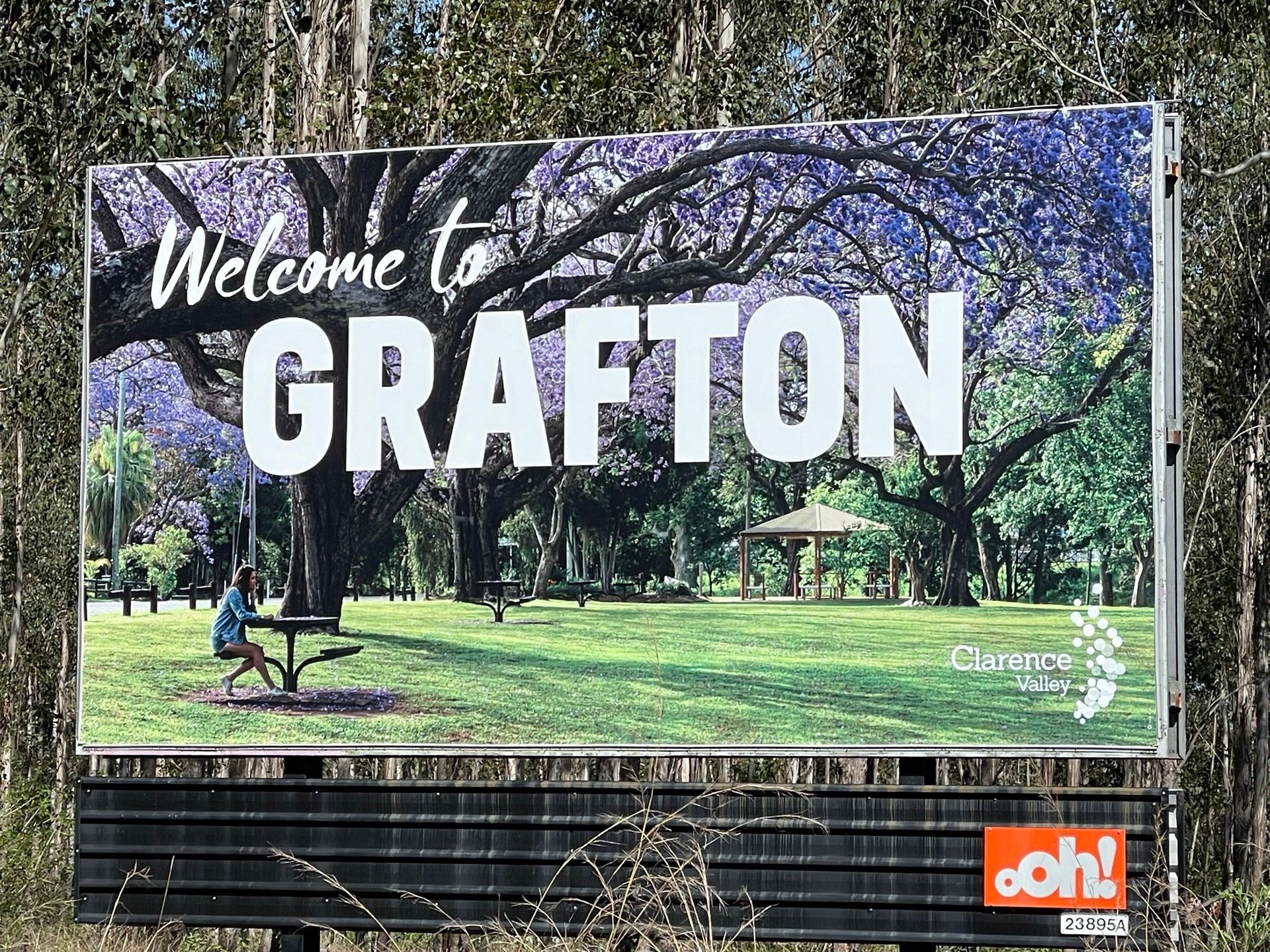 | 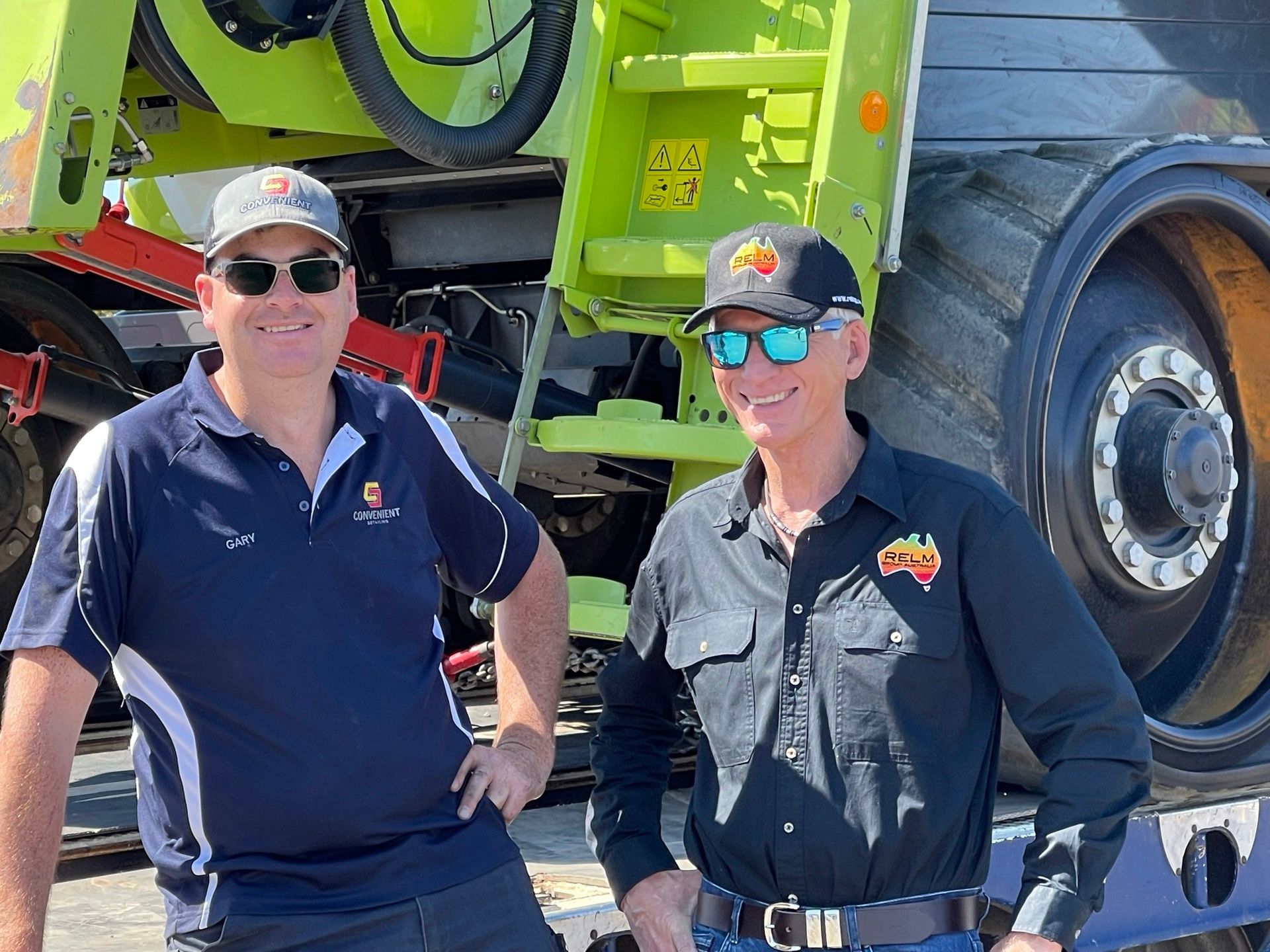 |  |
Please email us with a picture of yourself or a family member in front of your TOWN-SIGN to [email protected]

Field Notes with RD Creative Studio: Long-Term Insights from the RD x REALM Collaboration
 |  |
If Your Website’s Not Bringing in Enquiries, Here’s Why (And What You Can Do About It)
Most agri-business owners don’t think of their website as a sales tool. It’s there. It works. It has your number. That should be enough, right?
But more often than not, we find the same thing: The website’s not broken. It’s just not helping.
It’s not guiding people to take the next step. And quietly, that means missed opportunities and good leads lost without you even knowing they were there.
3 Things You Can Fix on Your Website This Week
You don’t need a full redesign to improve performance. Start here:
1. Add a Real Headline
Don’t open your homepage with “Welcome to our website.” Instead, use this formula:
Who you help
What do you help them do
Why are you different
Example:
Trusted Livestock Transport for Southern NSW — Fast Turnarounds, Proven Animal Welfare Standards
2. Add a Clear Call to Action on Every Page
A single Contact page isn’t enough. People scan fast, and if the action isn’t clear, they bounce.
Do this:
Add a button or link that says: “Enquire Now,” “Book a Demo,” or “Request a Quote”
Place it at the top, middle, and end of your most visited pages
3. Prove You’re Legit
Trust is earned before the first call. Add simple trust signals:
Show a recent project or a happy client quote
Add real photos (team, shed, site, stock) — not just stock imagery
Link to any certifications, accreditations, or partners you work with
People buy from those they recognise. Make that decision easier.
Bonus: See What a High-Performing Landing Page Looks Like
We’ve put together a visual cheat sheet showing how top-performing pages guide visitors.
It’s about being clear, trustworthy, and easy to act on.

Where This Leaves You
If your site is quiet, confusing, or just "there," it's costing you.
We help rural brands make their websites work harder.
📫 Got questions? Want us to take a look at your website?
Say hello at [email protected] or explore more at rdcreativestudio.com.au

Women in Ag
Welcoming Amanda Burchmann – A Strategic Long-Term Venture with REALM Group Australia

Are You Accidentally Fuelling Parasite Resistance on Your Farm?
Good Evening,
I hope this week has been a good one for you. As we are coming into the warmer weather, we see an increases of parasites and pests. Sometimes it seems a never-ending battle of controlling Buffalo files, ticks, and parasites.
Flies, buffalo flies, and ticks are more than just an irritation — they’re a silent profit drain for Australian livestock producers. What’s worse, years of underdosing, using the same products over and over, and neglecting pasture management have allowed parasites to build resistance to our most trusted chemical treatments.
Across beef, dairy, and small-stock operations, resistance is rising fast — leading to poor control, wasted product, animal stress, and preventable production losses. The problem often isn’t the product itself, but how it’s used. Too little dose, too late in the season, or from the same chemical group year after year — and we’re giving pests the perfect environment to adapt.
This month’s feature article explores:
✅ Why resistance is now one of the biggest threats to herd productivity and animal welfare
✅ Common mistakes producers make when treating for flies and ticks
✅ Practical, on-farm steps to get ahead — from rotating actives and accurate dosing to smarter grazing strategies
If you’re serious about protecting your herd and the future effectiveness of your treatments, this is a must-read.
👉 Read the full article: https://www.jabagrisolutions.com.au/knowledge/parasite-resistance- the-hidden-threat-to-livestock-productivity
Wishing you a productive week ahead, and here’s to making the most of the season while protecting the resource that matters most – your land.
If you would like to deep dive into a topic, please reach out.
Amanda Burchmann
Livestock Production & Industry Development Specialist
Founder | Advocate | Producer
📞 0408 847 536
📧 [email protected]
🌐 www.jabagrisolutions.com.au

Welcoming Simon Cheatham – RINGERS FROM THE TOP END with REALM Group Australia

Simon Cheatham- RINGERS FROM THE TOP END (RFTTE)
G'day, REALM Readers!
After a busy few days last week in Broome at the Kimberley Pilbara Cattleman's Conference, I'm looking forward to catching up with many of you next week at the Cattle Connect 2025 event at the Dalby Showgrounds - including the inaugural Cattle Australia Cup teams campdrafting competition.
In the meantime, it's down to business... looking for a job in the Kimberley in 2026? These roles with Pearl Coast Pastoral on cattle stations based on the beautiful Gibb River Road provide you with these rare opportunities:
A focus on creating strong, all-around stock workers, they offer extensive on-the-job training
Gain Ag certificates
Machinery tickets
Attend horse and stock school schools
Build your skills in a progressive environment
Napier Downs Station and Mount House Station are looking for some future stock stars to join their crews across both stations...their roles include Station Hands, Bore Runner, and a Gardener.
Hooroo for now,
Simon Cheatham
0417 277 488 | [email protected]
Founder | Ringers From The Top End | RFTTE.com | The Online Campfire since 2007
RFTTE PTY LTD | ABN 29 678 593 283

“Samantha Watkins Photography”
REALM Group Australia is proud to sponsor amateur photographer Samantha Watkins. We've seen her photography skills grow tremendously over the years, and we believe it's the perfect time for her to step into the photography world.

Click on the link to take you to her FB photography page, where you can see her beautiful photos.
It is called "Samantha Watkins Photography" https://www.facebook.com/profile.php?id=61573116870308

Samantha Watkins's sample photography.
All photos are available for purchase – simply email [email protected]
And she will be happy to assist you.

Active & Upcoming AUCTION!
(Under Auction Listings)
Let us know what you have to sell or auction - it’s FREE to List, and FREE to advertise. Please email [email protected]


Let us help you with your financial needs. Click Here www.payintime.com.au
Let us help you with your financial needs. Click Here www.payintime.com.au
— Robbie McKenzie

REALM Group Australia
REALM Group Australia (RGA) - originally est. 1992. The most trusted online Ag Marketing System in Australia. Built by Farmers for Farmers! Education is the KEY. True Pioneers - We were the first, and we are still growing. Proud Supporters of the Royal Flying Doctor Service (RFDS) & Ronald McDonald House Charities (RMHC)











